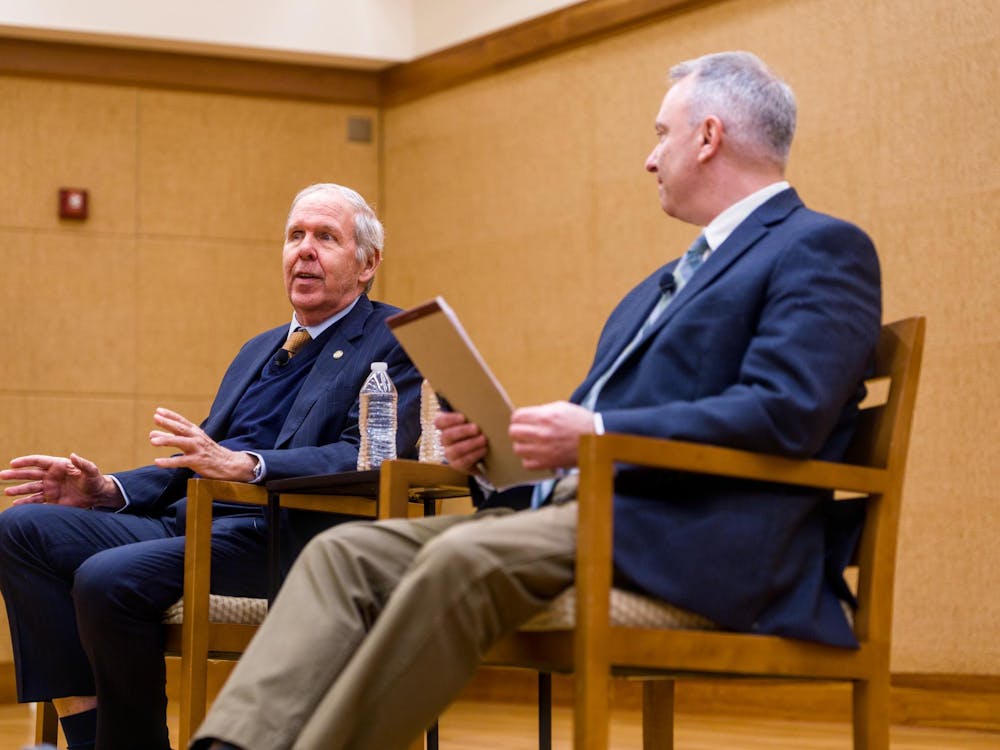President Barack Obama held a phone conference with college media outlets Tuesday from Ames, Iowa, continuing his recent push of aiming campaign resources toward youth voters.
After a strong wave of youth support helped carry Obama into his first term in 2008, the president’s campaign has recently begun redoubling its efforts at appealing to this traditionally
Democratic demographic by seeking out media opportunities with college publications and grassroots organizations.
During the conference call, Obama recognized the importance of the youth and student voters this November, saying he and Republican Presidential Candidate Mitt Romney differ on several issues popular with young voters more sharply than Obama and Sen. John McCain (R-Az.) did four years ago.
The president said he and Romney disagree strongly on campaign finance reform, immigration reform and climate change, where he and McCain found common ground in the 2008 presidential race.
Obama also addressed his work to maintain the affordability of higher education during the call, an issue near to the hearts of many student voters, emphasizing his work to keep interest rates low for student loans and expand the number of Pell Grants, a federal program that offers need-based college grants.
“Your vote helped us to create a new college tax credit,” he said to students. “[We] fought and won to keep student loan rates low.”
Romney Campaign spokesperson Curt Cashour, however, said that Obama has failed during his term to deliver lower costs for higher education.
“When he was campaigning in 2008, he promised to bring college tuition down,” Cashour said.
“The average cost of in-state tuition at four-year colleges has increased [by 25 percent].”
Romney’s plan is to increase affordability by simplifying the financial aid process and providing clearer information to students so they can make better choices, Cashour said.
Obama said he wanted to increase job opportunities for college graduates both by encouraging students to consider fields with high demand and by having community colleges create hubs, where local innovative businesses would help establish curricula.
In another arm of this targeted attempt to communicate more frequently with local media — and not just the national press corps — the president visits Charlottesville Wednesday. In Virginia — a state that Obama captured in 2008, but one that Democrats had not previously won since Lyndon B. Johnson’s election in 1964 — young voters could prove key in deciding whether the state goes blue for only the second time in almost half a century.
A Rasmussen poll from late last week shows Romney and Obama neck-and-neck in Virginia at 47 percent each.
Cashour said the Romney campaign had already reached out to one million Virginia voters. He added that Virginia’s low unemployment rate relative to the national average could hurt the president’s chances in the state since voters would attribute the state’s economic success to the policies of its Republican leaders.
“Obviously [Virginia] Gov. [Bob] McDonnell and Lt. Gov. [Bill] Bolling have made some positive contributions,” Cashour said.
Politics Prof. Larry Sabato, who is covering the Republican National Convention in Tampa, said Charlottesville specifically and Albemarle County more broadly would be vital to Obama’s reelection effort.
“If Obama doesn’t win by a large margin in Albemarle, it’s a sign he’s losing Virginia,” Sabato said in an email. “It’s not enough to carry Charlottesville by 80 percent.”
Assistant Managing Editor Caroline Houck contributed to this article.






